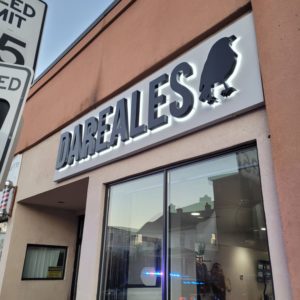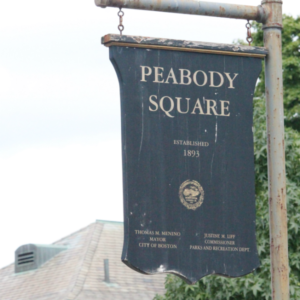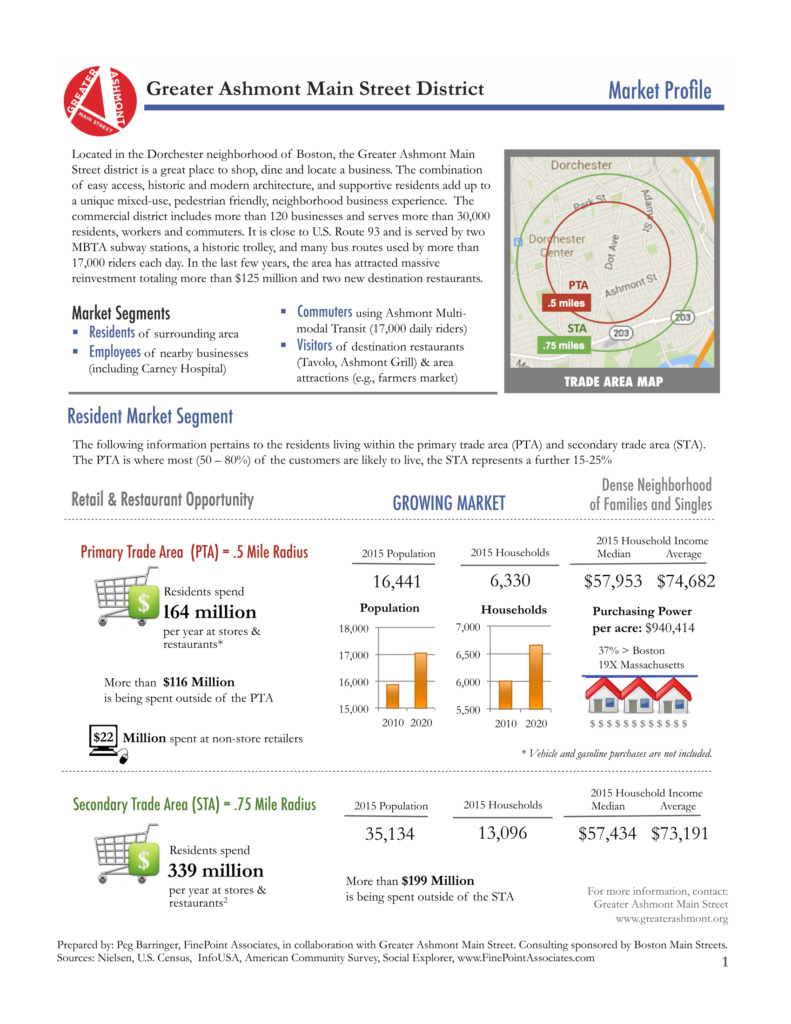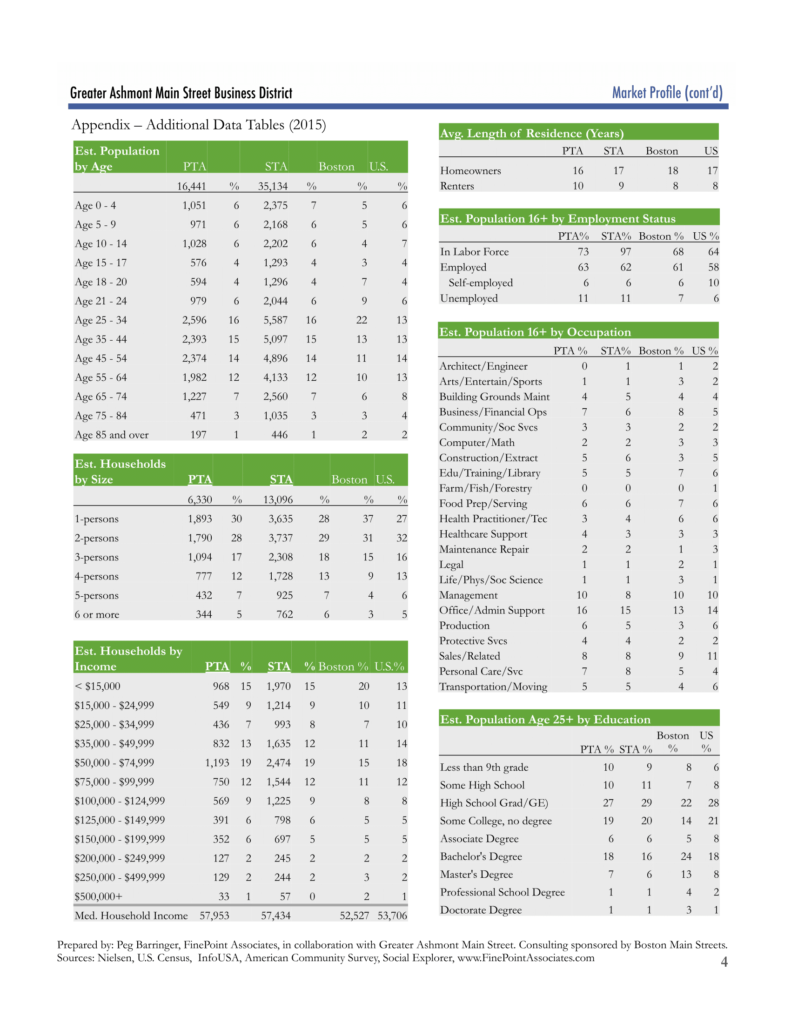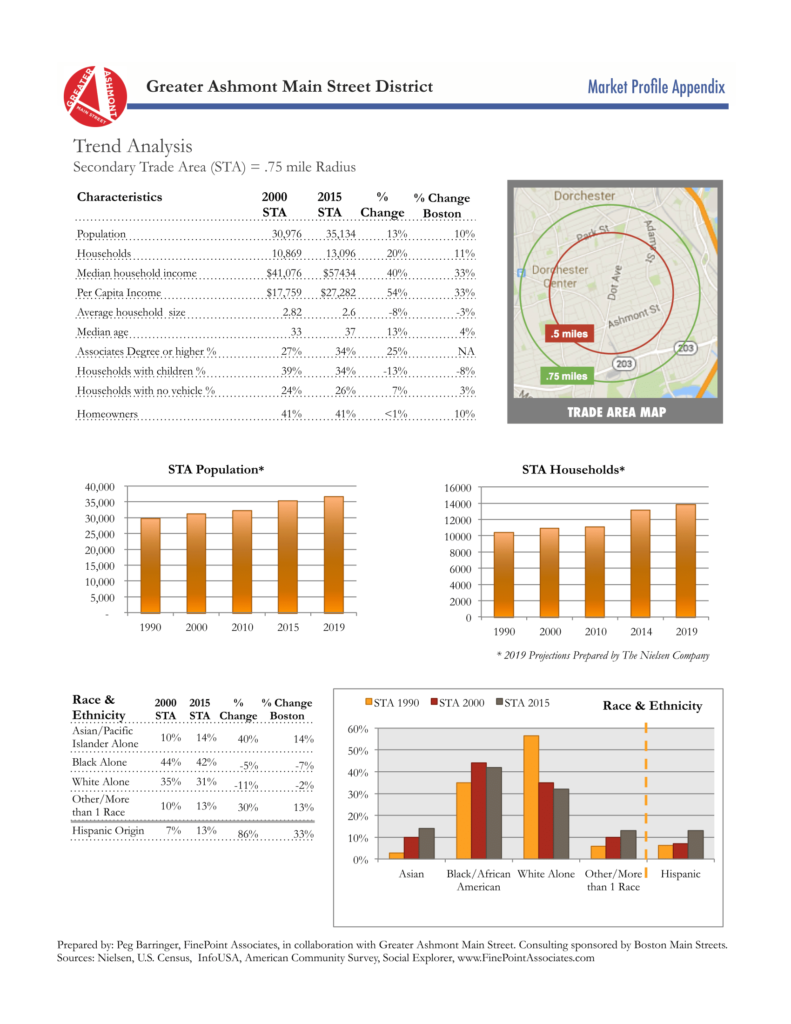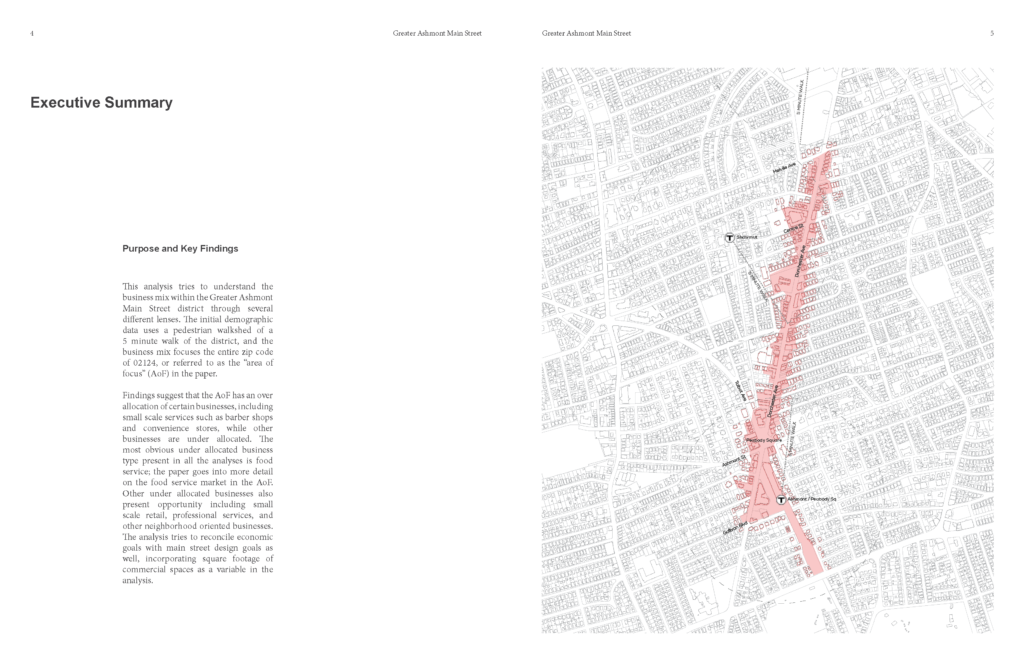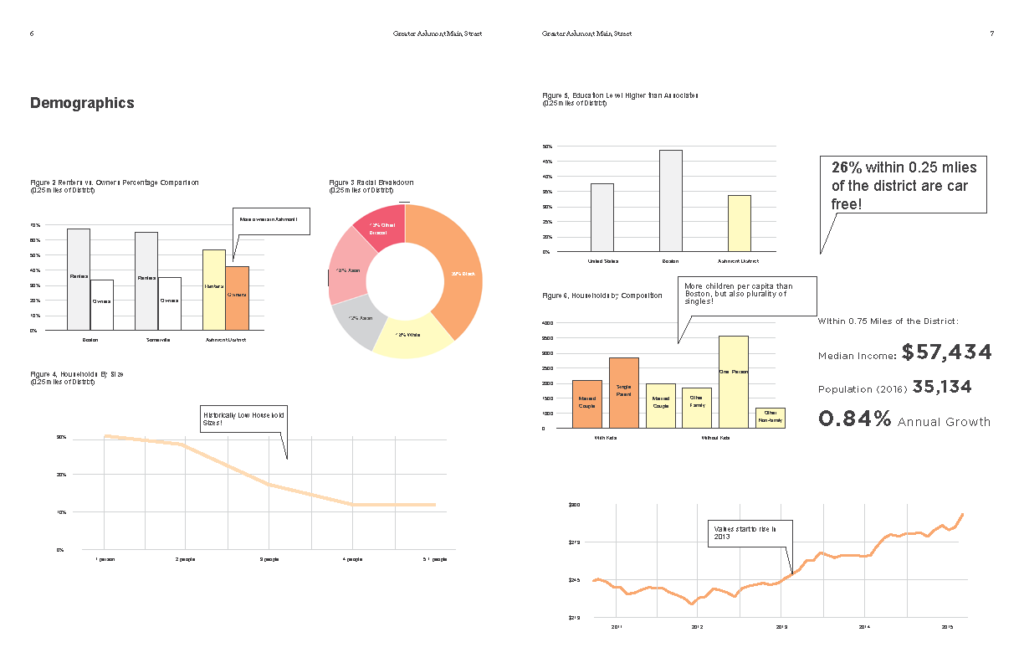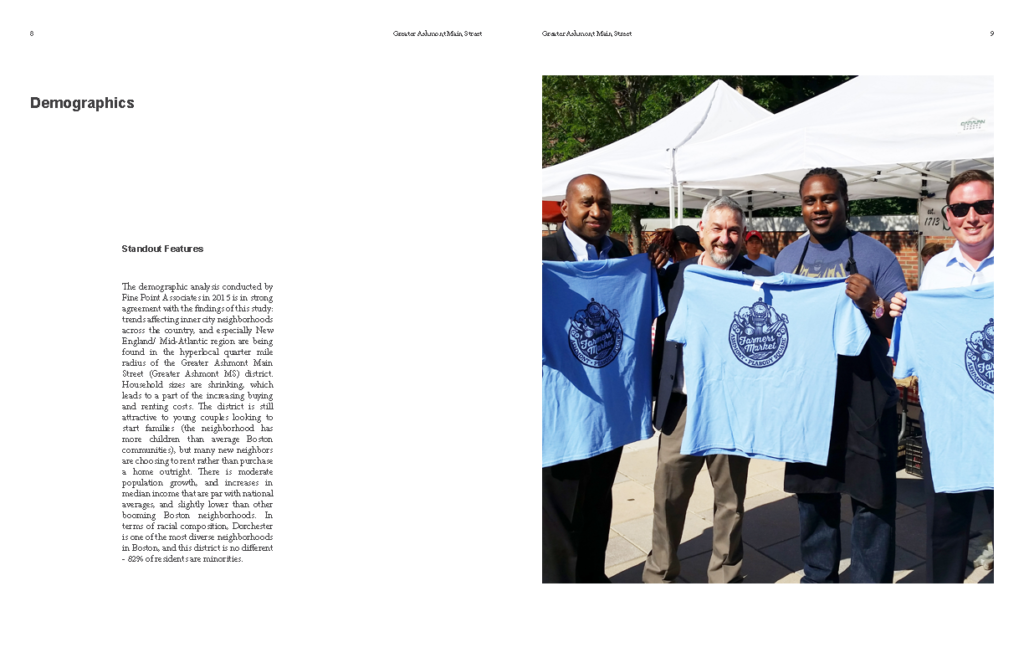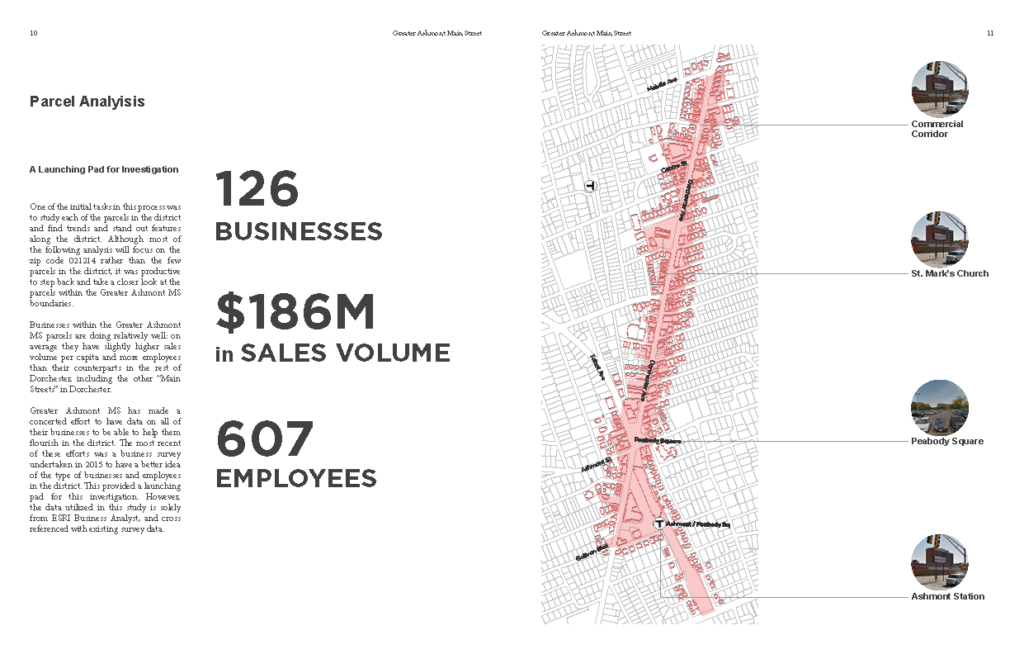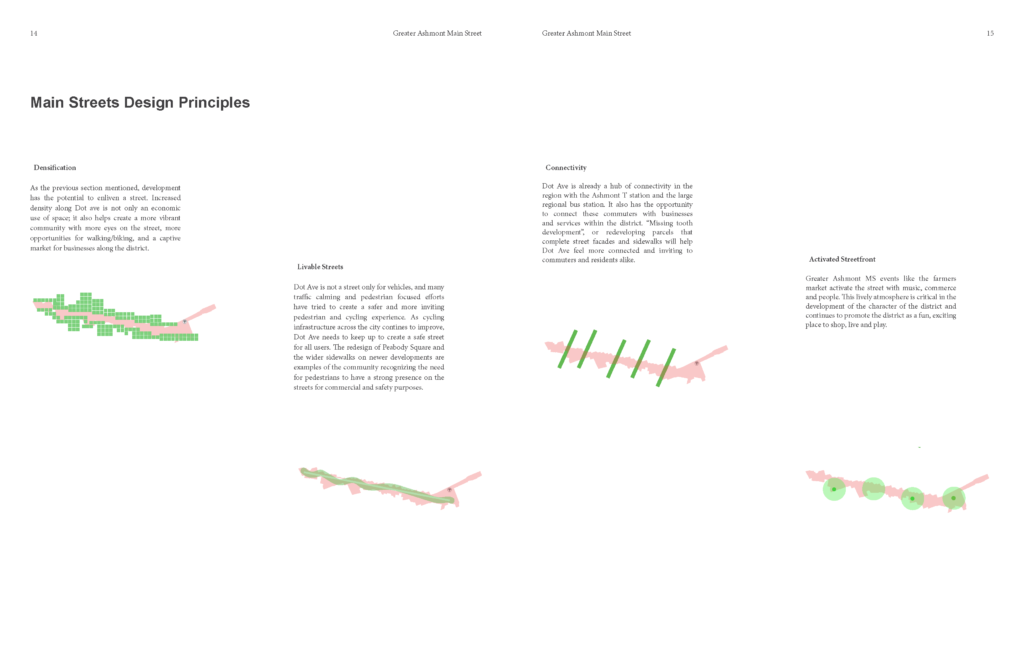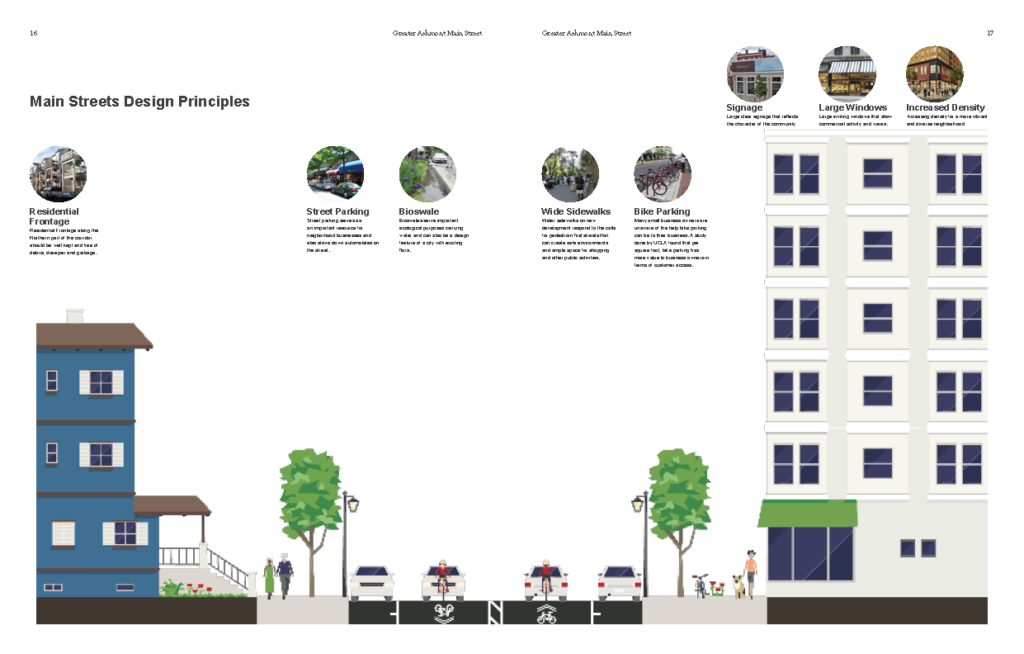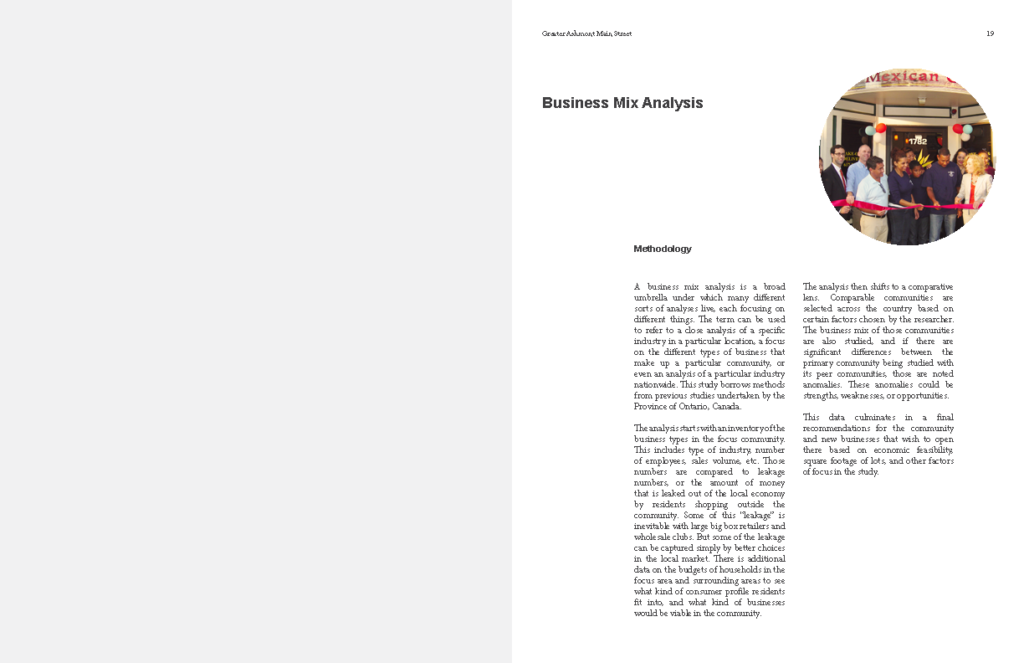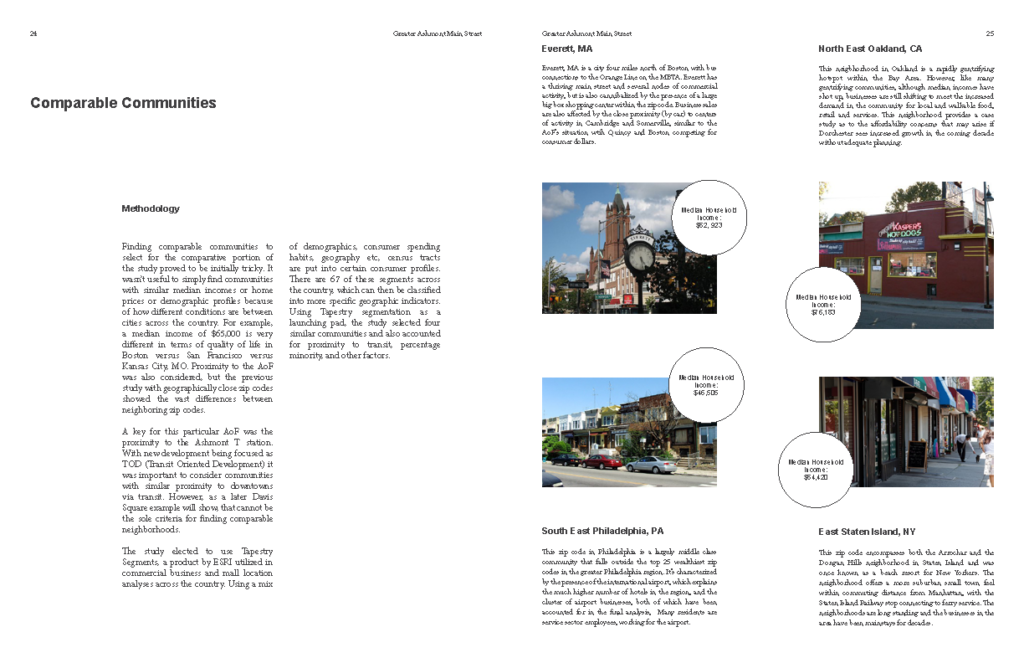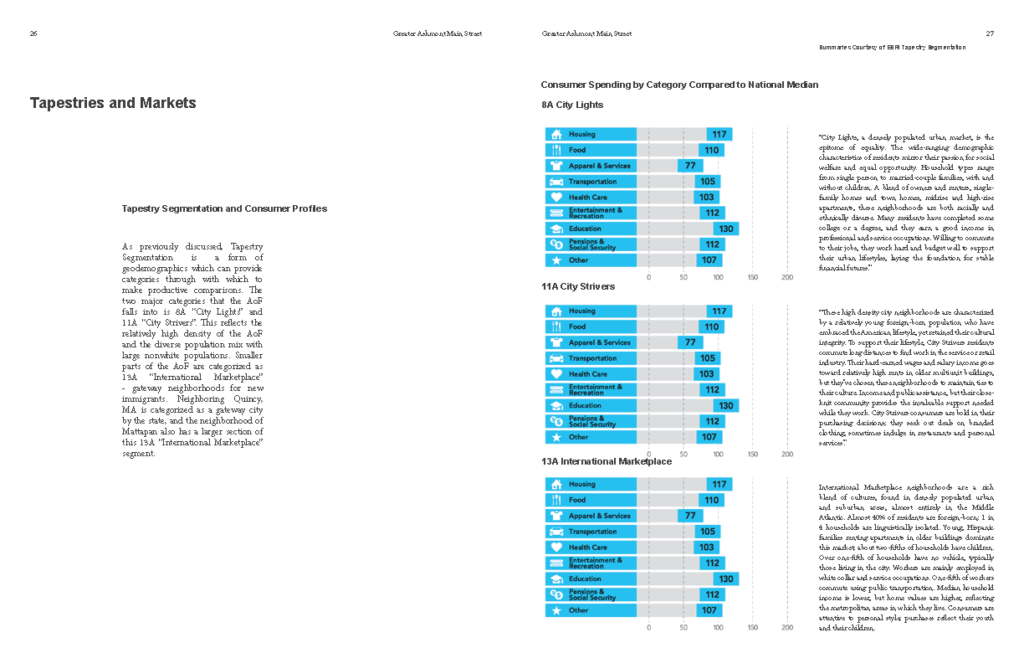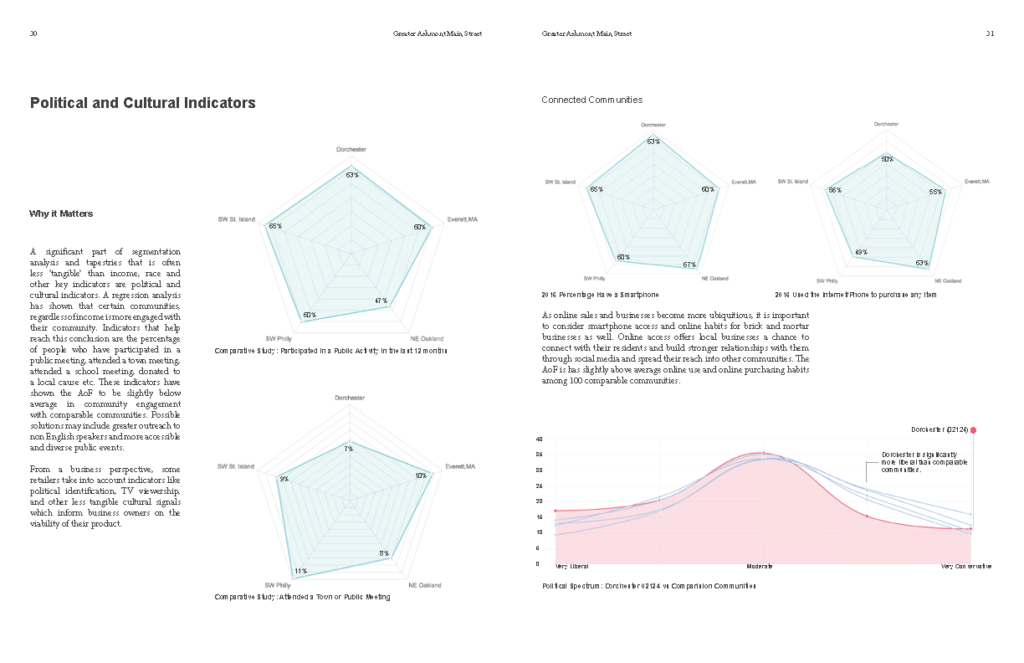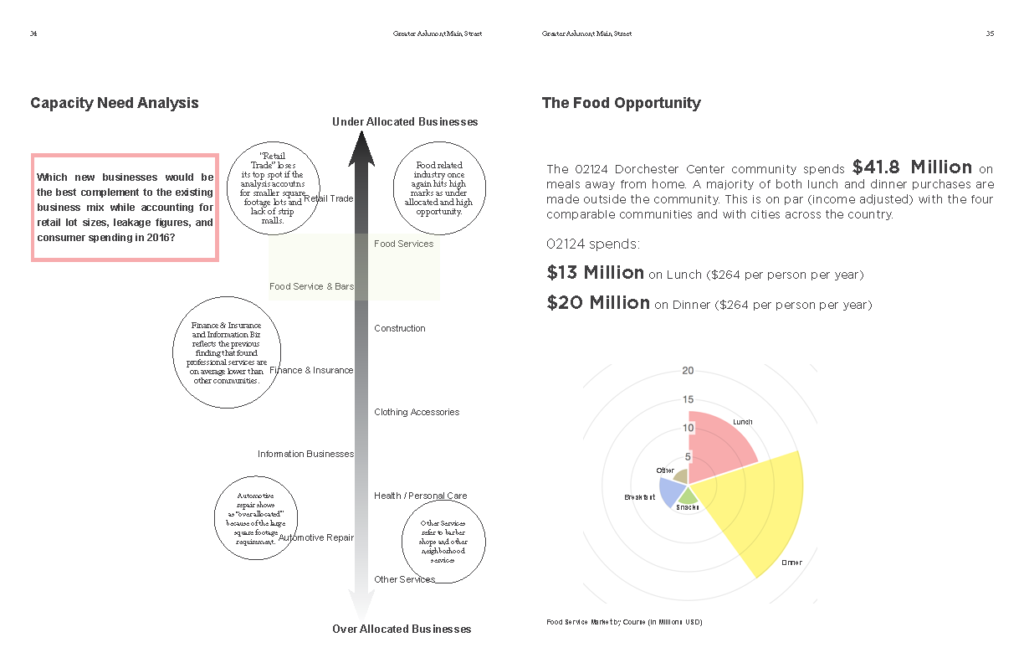District Profile
Located in the Dorchester neighborhood of Boston, the Greater Ashmont Main Street district is a great place to shop, dine, and locate a business. The combination of easy access, historic and modern architecture, and supportive residents add up to a unique mixed-use, pedestrian friendly, neighborhood business experience. The commercial district includes more than 120 businesses and serves more than 30,000 residents, workers and commuters. It is close to U.S. Route 93 and is served by two MBTA subway stations, a historic trolley, and many bus routes used by more than 17,000 riders each day. In the last few years, the area has attracted massive reinvestment totaling more than $125 million and two new destination restaurants.
